How to Fix BSOD Error 0x00000154 on Windows 10/11?
The blue screen of death 0x00000154 occurs when the users try to launch apps or play games on their computers. It is accompanied by the error code UNEXPECTED_STORE_EXCEPTION, and means that the kernel memory store component caught an unanticipated exception.

Before we move towards the troubleshooting steps, it is essential to identify what might be causing the problem. The easiest way to do this is by using the Event Viewer. Event Viewer logs application and system messages, including error messages, information messages, and warnings.
Here is how you can use this tool to pinpoint the cause of the problem:
- Open a Run dialog by pressing the Win + R keys together.
- Type eventvwr.msc in the text field of the dialog and click Enter.
- In the Event Manager window, click on Action in the top pane and click on Create Custom View.
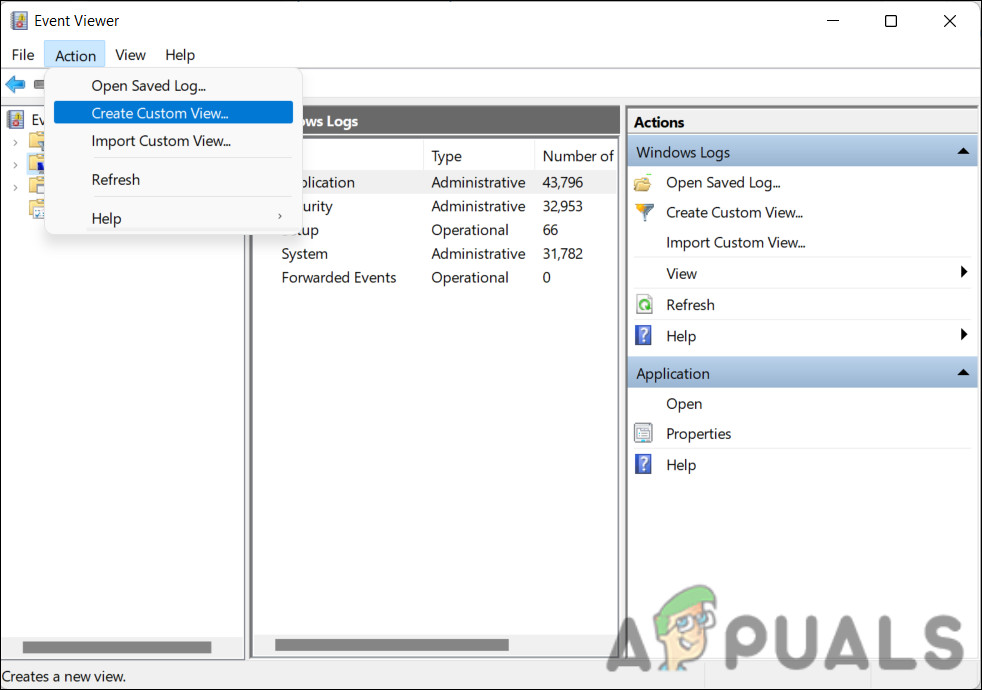
Create a custom view in the Event Viewer - Now, expand the dropdown for Logged and choose the time when you encountered the issue.
- Choose Error in the Event level section.
- Now, expand the dropdown for Event logs and choose Windows Logs from the list of options.
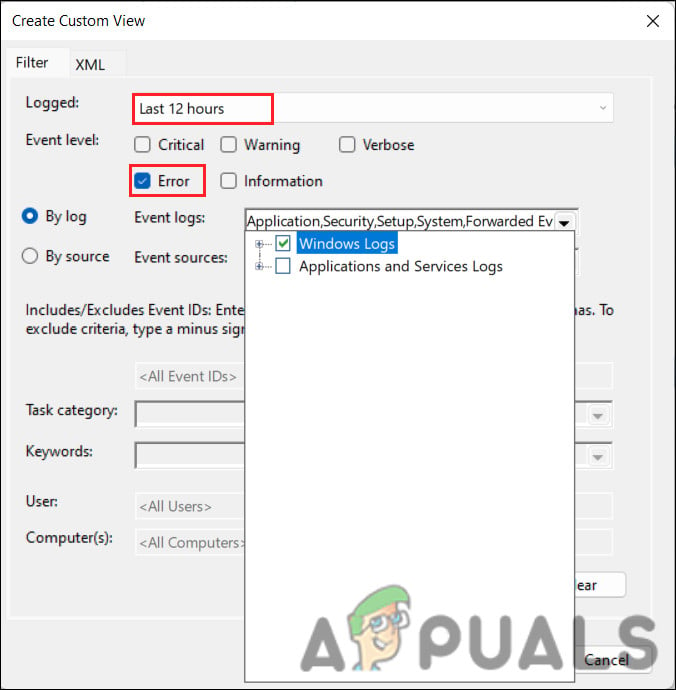
Create a custom view in the Event Viewer - Click OK to proceed and then name the event.
- You will now be able to see the errors that occurred in the time frame you selected. You can find the BSOD error here and check what caused it.
If you find an error, check what caused it and then implement the most appropriate troubleshooting method below.
1. Run Memory Diagnostics Tool
Memory Diagnostic Tool is a useful tool for checking RAM for potential problems. In most cases, it targets problems that result in slow system performance, frequent freezes and hangs, or blue screens of death.
Follow these steps to run the tool:
- Type Windows Memory Diagnostics in Windows search and click Open.
- Choose whether the tool should be run immediately or scheduled to run at the next restart. When you restart your computer, Windows Memory Diagnostics automatically runs a memory test.

Run Memory Diagnostic tool - If you wish to run the extended test, press F1 and use the Up and Down arrows to change the Test Mix to Extended, and then press F10 to apply the desired settings.
2. Update Drivers
You might also be facing the error because of the outdated drivers on your system.
You should check the Device Manager for outdated drivers to ensure that is not the case in your scenario. After identifying an outdated driver, follow the steps listed later in this guide to update it.
Here is how you can proceed:
- Type Device Manager in Windows search and click Open.
- Check for any yellow warning signs on drivers. This indicates that the driver is either corrupted or outdated.
- Right-click the problematic driver and select Update driver.
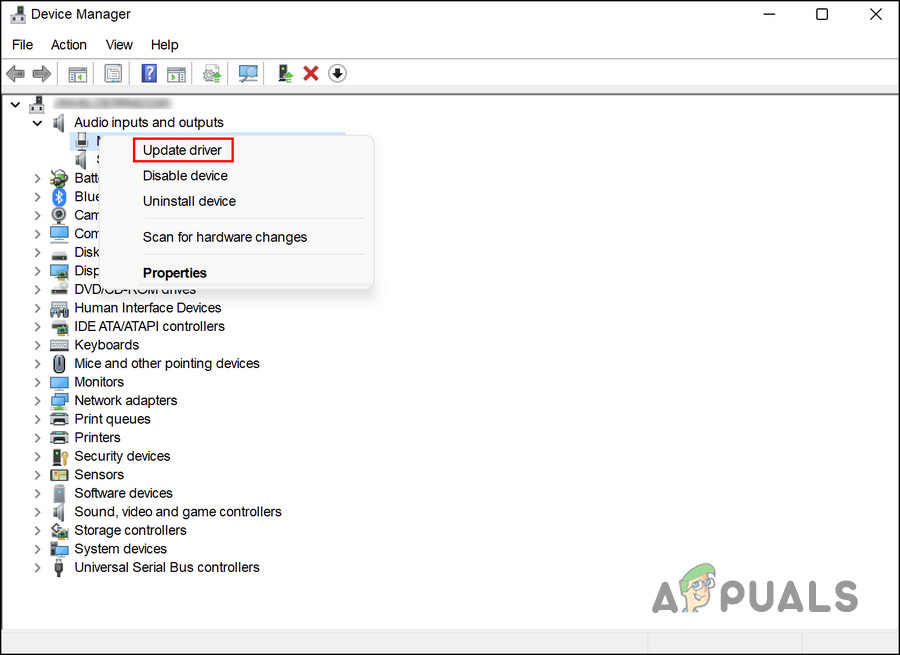
Choose the Update driver option - Choose Search automatically for drivers and wait for the system to find an updated version of the driver.
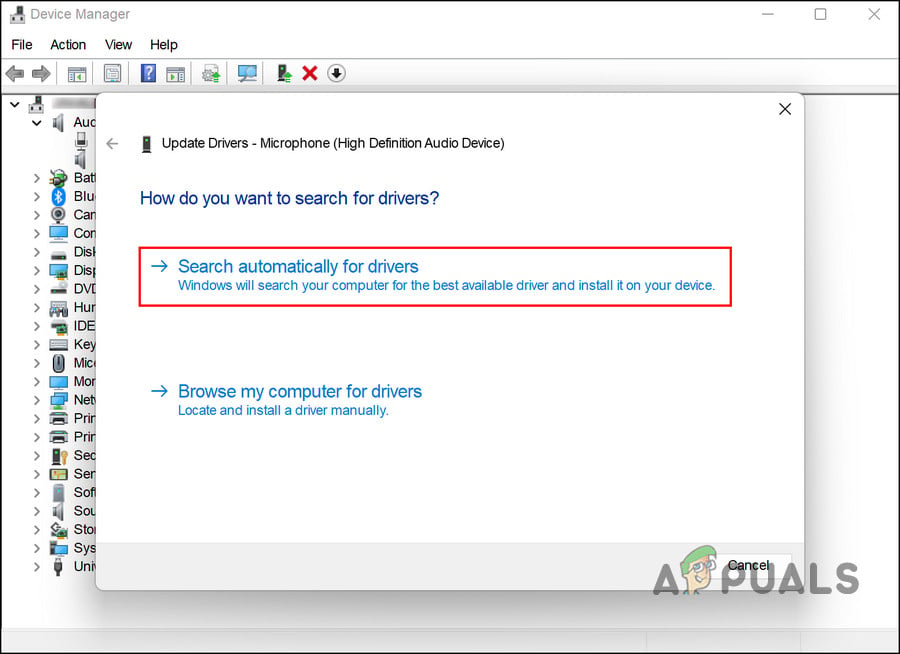
Click on the Search automatically for drivers option - Install the driver by following the instructions on your screen.
It is also possible to install the latest drivers from the official manufacturer’s website. After updating all the drivers, check to see if the issue has been resolved.
3. Run an SFC Scan
System File Checker (SFC) is a built-in Windows utility that scans and restores corrupted system files. Using this utility in Windows 10 and 11, you can protect registry keys, folders, and critical system files using Windows Resource Protection (WRP).
SFC works by scanning the system for corrupt files and if it finds any, it will replace them with their healthier cached counterparts.
Here is how you can run the SFC command:
- Press cmd in the search area of the taskbar and click on Run as administrator.
- Alternatively, you can open a Run dialog by pressing the Win + R keys together.
- In the Run text field, type cmd and press Ctrl + Shift + Enter to open Command Prompt as an administrator.
- In the Command Prompt window, execute the following command:
sfc /scannow
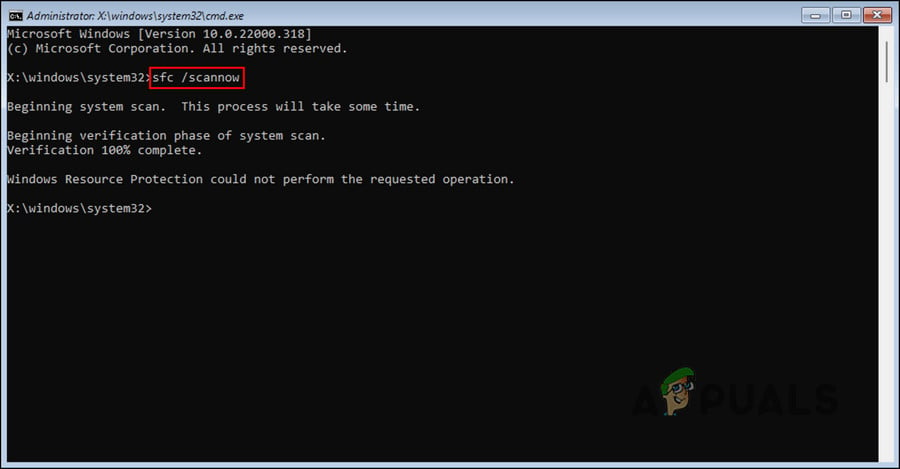
Run the SFC command
Once the command is executed, check if you can now use the scanner without any problems.
4. Install the Pending Updates
You might also be facing the problem because of an outdated operating system. If you haven’t installed the pending system updates in a while, then you might be able to fix the issue by installing the pending updates one by one using the Settings app.
Here is how you can proceed:
- Press the Win + I keys together to open Windows Settings.
- Choose Windows Update from the context menu.
- In the right pane, click on the Check for updates button and wait for Windows to bring up any pending updates that may need installation.

Check for the Windows updates - Install the pending updates one by one and then check if the issue is resolved.
5. Disable Antivirus
If you are using an antivirus program, this may be the issue. In spite of the fact that such programs provide excellent protection against viruses and malware, they are known to block some features of the system, leading to problems such as the one we are experiencing.
It is best to temporarily disable your antivirus program in order to resolve this issue. We have shown how you can do so using Avast antivirus. Depending on your antivirus program, the steps may differ.
Here is how you can proceed:
- Right-click on the antivirus icon in the taskbar.
- From the context menu, choose Disable > Disable until the computer is restarted.

Disable the antivirus until you restart the computer
After disabling the antivirus, perform the steps that were previously causing the error and check if the issue is resolved.
6. Disable Fast Startup
The Fast Startup feature in Windows 10 and 11 helps your computer boot up more quickly after being shut down. By using Fast Boot, you can place your computer into hibernation instead of shutting it down completely. By default, Fast Boot is enabled on computers that can hibernate.
However, this feature can also cause problems when it does not load the required drivers and services correctly every time, resulting in a blue screen of death like the one under discussion. The solution, in this case is simple, as all that you need to do is disable the fast startup feature via the Control Panel.
Here is how you can do that:
- Type Control Panel in the search area of your taskbar and hit Open.
- In the Control Panel window, click on Power Options. You can find this option by clicking on View by and selecting Large icons.
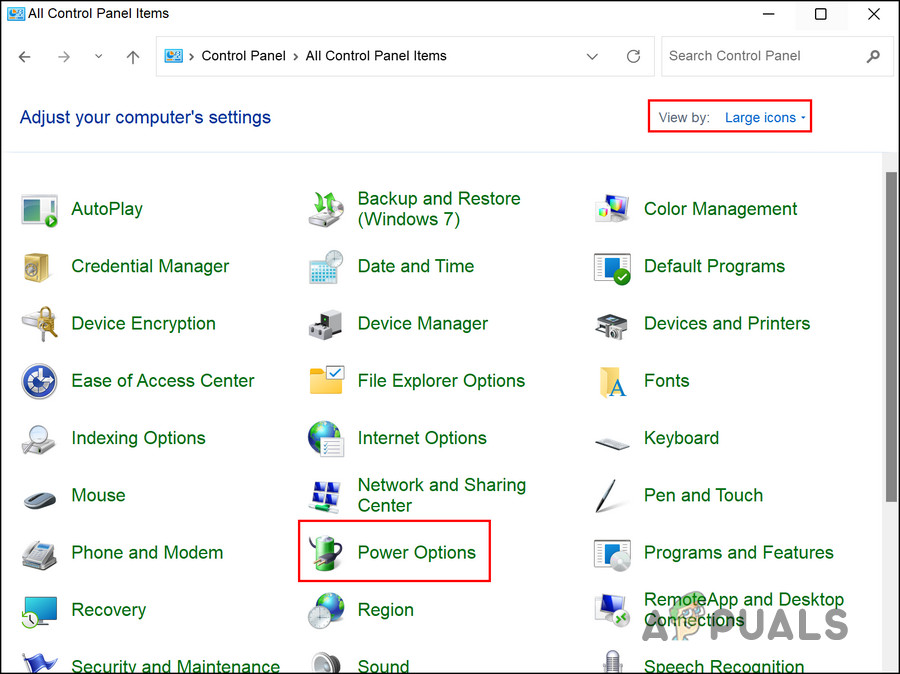
Click on Power Options - Now select Choose what the power buttons do.
- Uncheck the Turn on fast startup option.
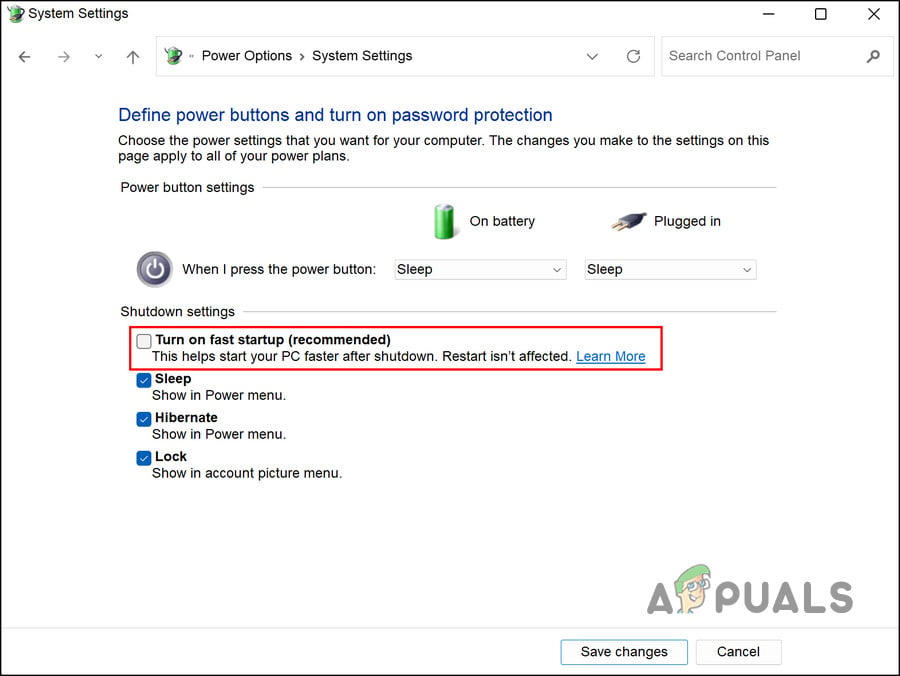
Disable the fast startup feature - In case the option is grayed out, click Change Settings that are currently unavailable and then uncheck the option.
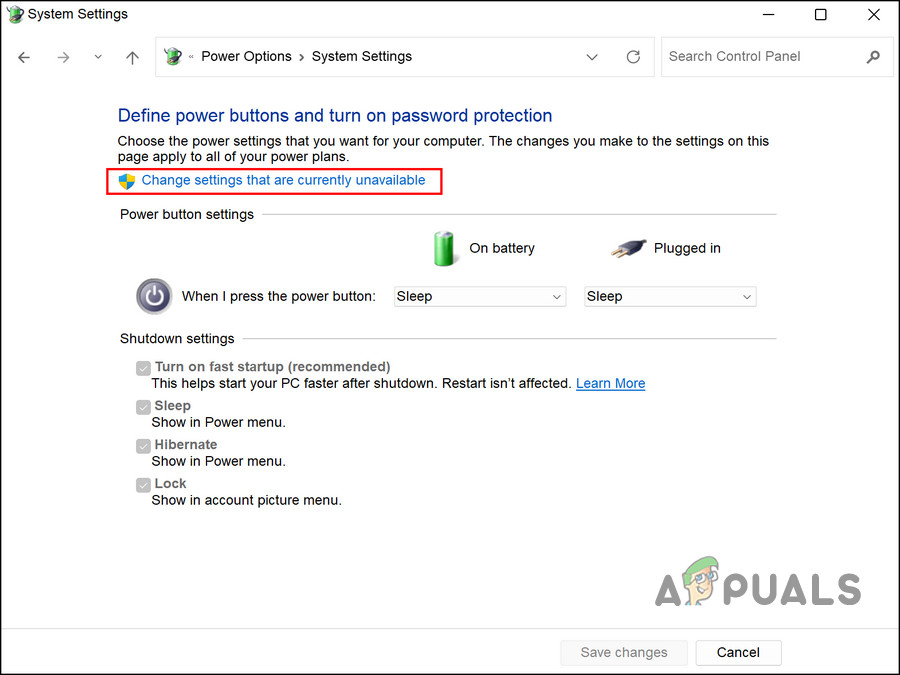
Click on the Change settings that are currently unavailable button





